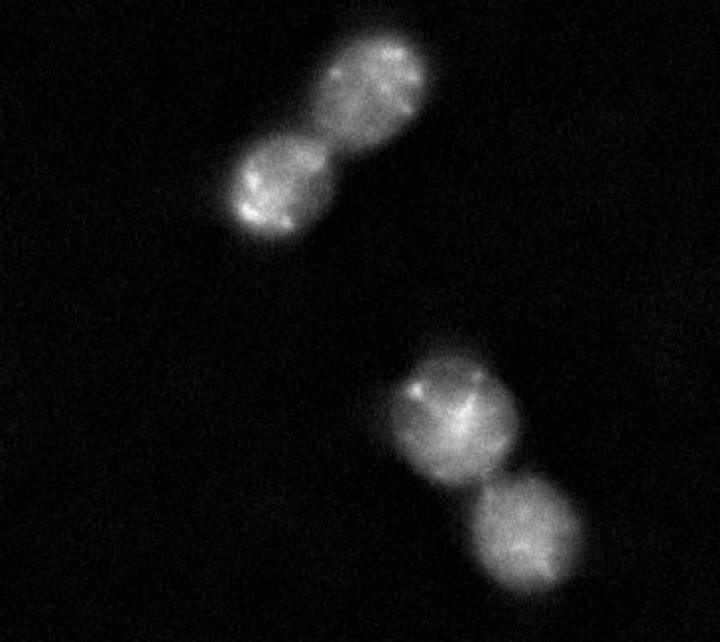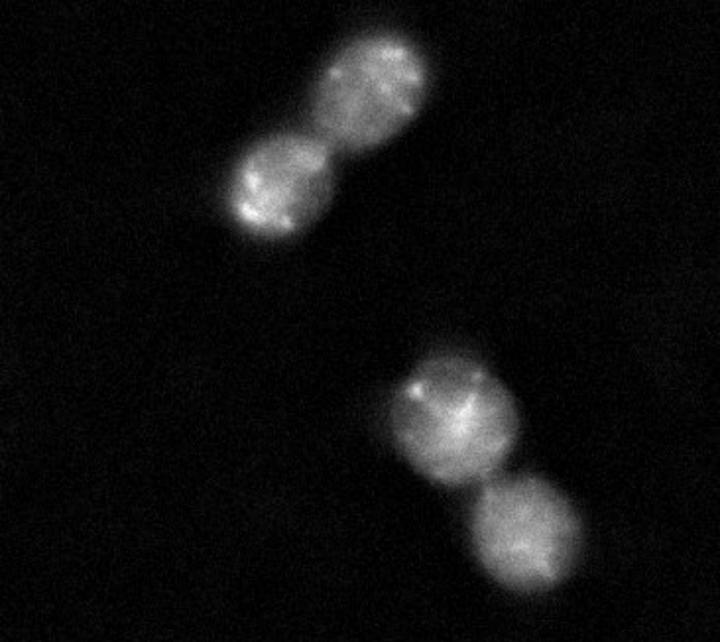
Credit: (Photo courtesy of Dr. Michael Polymenis, Texas A&M AgriLife Research)
COLLEGE STATION — Modern genome sequencing methods used to measure the efficiency of synthesis of individual protein during cell division has found that the enzymes that make lipids and membranes were synthesized at much greater efficiency when a cell is ready to split.
That is a conclusion of collaborative research published this month in the European Molecular Biology Organization Journal, according to Dr. Michael Polymenis, a Texas A&M AgriLife Research biochemist in College Station and lead author.
Microscopy images of dividing yeast cells accumulating lipid droplets (shown as bright spots) because they have lost their ability to regulate the synthesis of a key lipogenic enzyme. (Photo courtesy of Dr. Michael Polymenis, Texas A&M AgriLife Research)
Polymenis said the finding provides new targets for controlling cell division in future studies. That's important, he said, because dysregulated cell division is a factor in some diseases, such as cancer.
"Understanding the role of protein synthesis during cell division will shed light on when cells will initiate their division, how fast they will complete it, the number of successive cell divisions, and the coordination of cell proliferation with the available nutrients," said Dr. Heidi Blank, Texas A&M University assistant scientist and the paper's co-author.
The research profiled yeast cells from the time of cell birth to identify messenger RNAs as they translated into proteins. That showed the development of lipids late in the cell cycle and the connection to cell division.
The report, which included scientists from Texas A&M and The Buck Institute for Research on Aging, noted that no studies previously had "queried directly and comprehensively the efficiency with which each individual protein is made during cell division in growing cells."
It turns out that not all proteins are made with the same efficiency, Polymenis said.
"If the dream of every cell is to become two cells as the Nobelist François Jacob famously quipped in 1971, then it is protein synthesis that makes cellular dreams come true," he said. "Protein synthesis underpins much of cell growth and determines the rate at which cells proliferate."
The research combined computational approaches to analyze the data by Dr. Rodolfo Aramayo, Texas A&M biology professor in College Station, and relied on state-of-the-art genome sequencing facilities at Texas A&M, directed by Dr. Charlie Johnson. It was funded by AgriLife Research, Texas A&M and the National Institutes of Health.
###
Media Contact
Kathleen Phillips
[email protected]
979-845-2872
@texasagwriter
http://today.agrilife.org
############
Story Source: Materials provided by Scienmag





